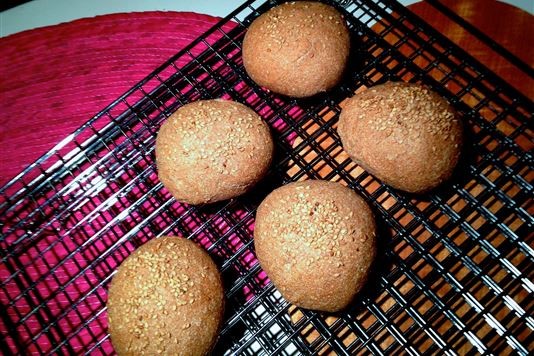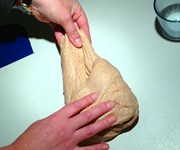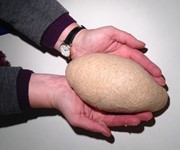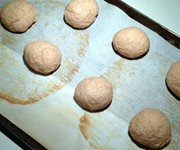Best British breads: a history of cobs

In the final part of our series, baking expert Jane Mason explores the history of the humble cob and tells us how to make our own.
The unsuspecting southerner
Order a sandwich at a sandwich bar in Leicester and you will be asked: “On a cob?”
A what?
What exactly is a cob?
 A cob is a small, round loaf of bread, or a small, round bread roll. Originally they would have been made with four simple ingredients: whole wheat flour, water, salt and some ‘sponge’ that provided the yeast to make the bread rise.
A cob is a small, round loaf of bread, or a small, round bread roll. Originally they would have been made with four simple ingredients: whole wheat flour, water, salt and some ‘sponge’ that provided the yeast to make the bread rise.
Commercial yeast as we know it (that is, yeast you can actually see) was only developed about 150 years ago, and yet we have been baking leavened bread for thousands of years. Until people could buy yeast, dough was made with a flour and water mixture containing yeast that naturally lives in the air all around us. There are lots of names for this flour and water combo: the one we see most commonly today is ‘sourdough’ – a word that, interestingly, came to the UK from the US.
 Although we see white cobs today, originally they were made with whole wheat flour. They are a simple, daily bread and the working person used whole wheat flour for their daily bread. White flour was for the rich and for baking seldom eaten luxuries like cakes, enriched breads and buns. There are no fancy ingredients in cobs – even today. Ingredients like dried fruit or nuts were expensive and most certainly not part of the daily bread. A few little seeds for decoration are all the fanciness you can expect!
Although we see white cobs today, originally they were made with whole wheat flour. They are a simple, daily bread and the working person used whole wheat flour for their daily bread. White flour was for the rich and for baking seldom eaten luxuries like cakes, enriched breads and buns. There are no fancy ingredients in cobs – even today. Ingredients like dried fruit or nuts were expensive and most certainly not part of the daily bread. A few little seeds for decoration are all the fanciness you can expect!
Then there is the shape: small and round, baked on a tray, and not in a tin. You do not need any fancy equipment to make cobs. Just a tray and an oven. And in today’s world, all ovens come with trays, so no investment needed.
One thing is certain
 It’s uncertain why people from Leicester call them cobs. OK, they’re small and round and sort of shaped like cobblestones. They could also be likened to lumps of coal, and ‘cob’ is an old word for ‘little round lump shape’, or thereabouts. Then too, in the local dialect, your ‘cob’ was your ‘head’, and this loaf is sort of shaped like a head. One thing is certain: a cob is not a roll, bap, or bun. It’s a cob.
It’s uncertain why people from Leicester call them cobs. OK, they’re small and round and sort of shaped like cobblestones. They could also be likened to lumps of coal, and ‘cob’ is an old word for ‘little round lump shape’, or thereabouts. Then too, in the local dialect, your ‘cob’ was your ‘head’, and this loaf is sort of shaped like a head. One thing is certain: a cob is not a roll, bap, or bun. It’s a cob.
Size doesn’t matter
There are small cobs that you use to make a cheese cob, and there are large cobs that you slice up and use for toast, or half-moon shaped sandwiches. They’re all cobs, they’re all really beautiful to look at and, for the beginner baker, cobs are great because they require no investment in bread tins. Try it out today!
You can read more about Jane's fabulous bread adventures on her Virtuous Bread blog here.
You might also like
Comments
Be the first to comment
Do you want to comment on this article? You need to be signed in for this feature